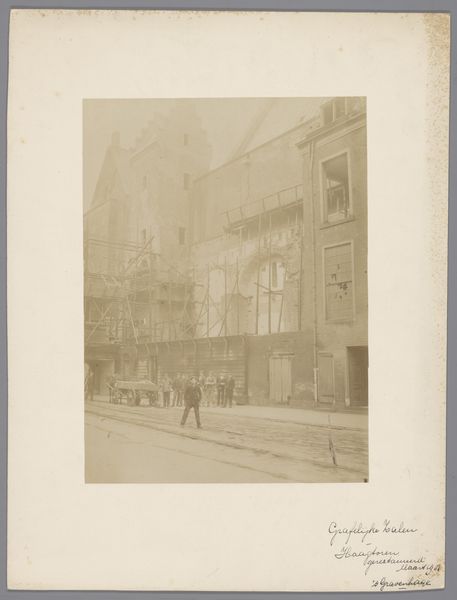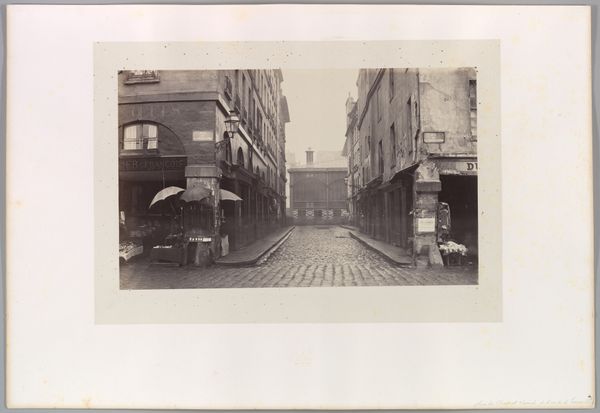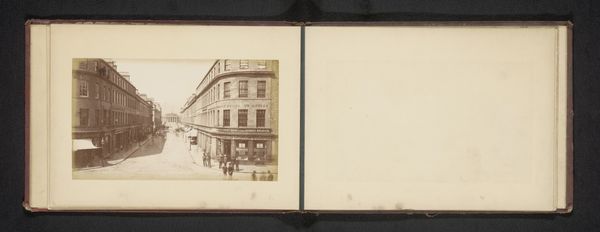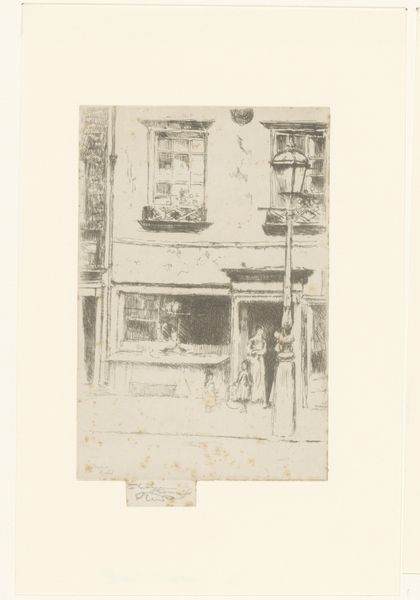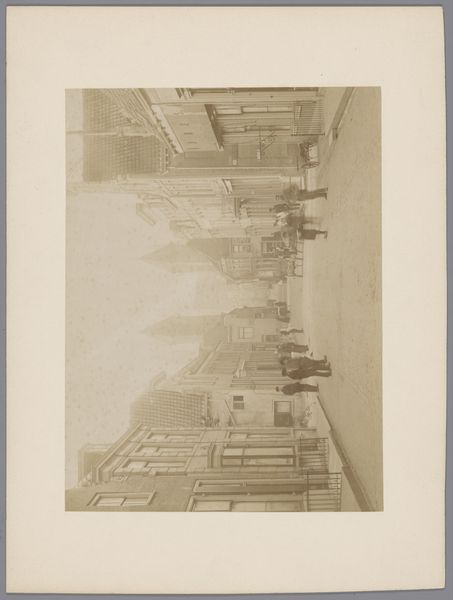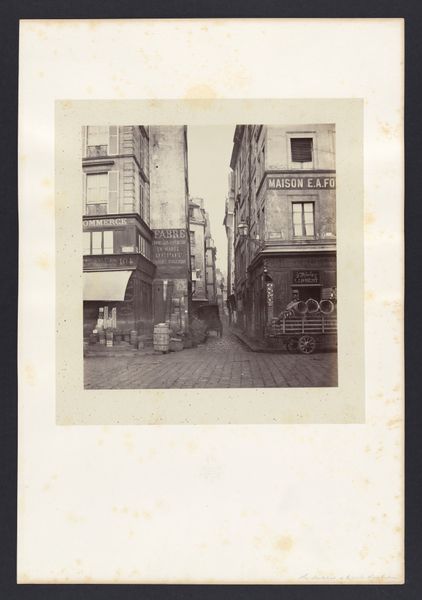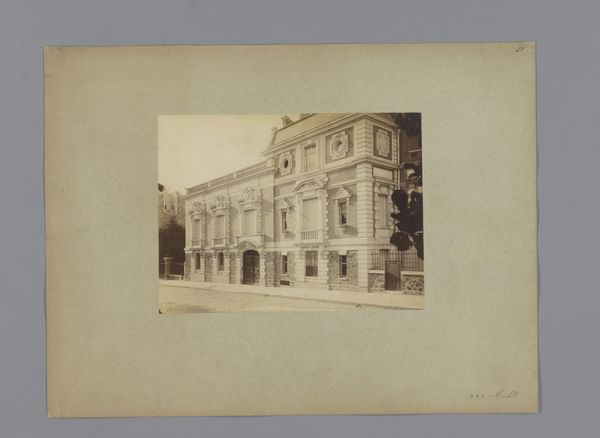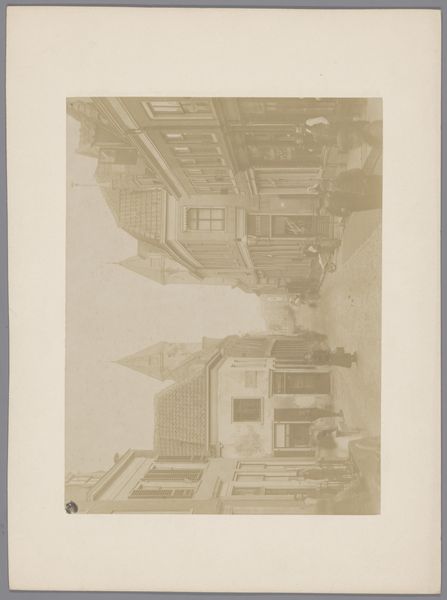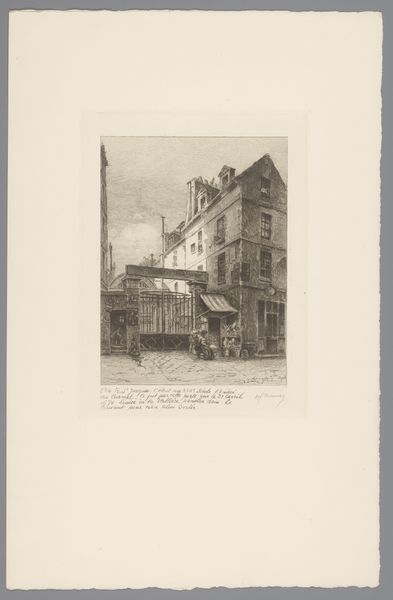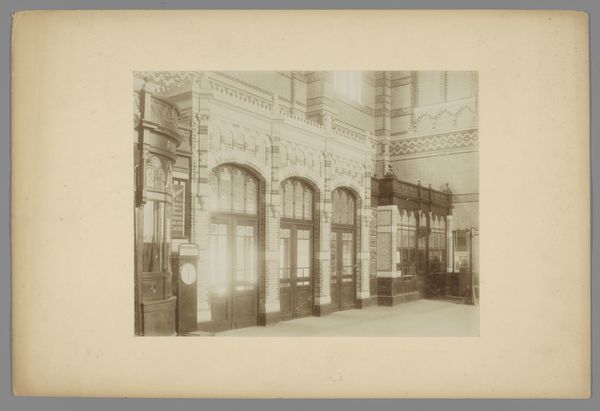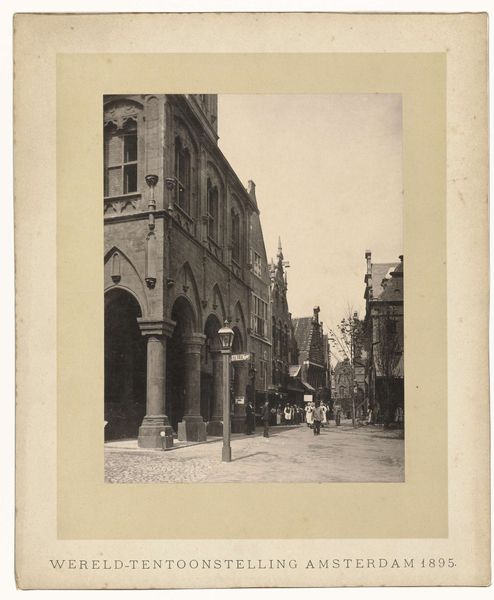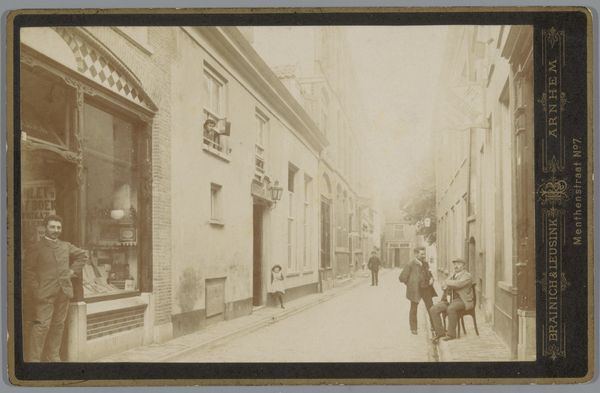
Nederland, Amsterdam, winkelgalerij in de tuin van het Paleis voor Volksvlijt 1892 - 1902
0:00
0:00
photography, gelatin-silver-print
#
portrait
#
toned paper
#
pale palette
#
muted colour palette
#
photography
#
gelatin-silver-print
#
cityscape
#
modernism
#
realism
Dimensions: height 120 mm, width 167 mm, height 238 mm, width 297 mm
Copyright: Rijks Museum: Open Domain
Curator: This is a photograph titled "Nederland, Amsterdam, winkelgalerij in de tuin van het Paleis voor Volksvlijt" by Sigmund Löw, dating from between 1892 and 1902. It’s a gelatin silver print. What strikes you initially about it? Editor: There's a certain somber elegance to it. It has muted, almost sepia tones, even though it's a black and white image. There's a feeling of quietude despite depicting a commercial scene. Curator: Precisely. The photograph documents a shopping arcade within the garden of the Palace of Public Industry in Amsterdam. Löw's focus seems to be on capturing the architectural details and the texture of commerce at the time. The glass, the intricate ironwork—all rendered with striking clarity. Editor: And those shops themselves! The prominent signage – “Sen-Sen” so clearly displayed, then harder-to-read texts further on. This repetition almost creates an intriguing visual rhythm. They evoke a whole world of forgotten brands and desires. What was being sold here, and who were these customers? Curator: Understanding the material reality gives insight. The Palace was built to promote Dutch industry and craftsmanship. So, this arcade likely housed displays of local manufactures. Löw’s photograph becomes a record of that moment – the turn of the century when industrialization and consumer culture were transforming European society. Editor: The image is replete with symbols that mirror this shift: there's this arcade structure—an indoor/outdoor market hybrid, a public space devoted to private gain. It signifies progress and commerce. The very style of advertising of “Sen-Sen”, for instance, speaks to an emerging mass-consumer mentality. Curator: Consider also the technical constraints and the choices they entail. As a gelatin silver print, the image renders impressive detail despite the period's limitations, highlighting Löw’s skill. It emphasizes his understanding of materials and process. Editor: Looking at the overall composition – it’s not merely a factual document. Löw arranged a certain perspective and light conditions that seem to impart meaning, imbuing the commercial space with historical dignity. I wonder if this portrayal speaks for its ambition of progress and commercial grandeur, and what ultimately vanished as the Palace itself burned down and these shopping opportunities faded in later decades. Curator: It really encourages to delve into the economic context of the day, reflecting on labor and industrial processes behind each visible storefront in the photograph. Editor: Absolutely. The photograph goes beyond simply depicting a scene. Its quiet symbols and carefully observed details echo forgotten economic values, reflecting broader transformation occurring at that moment in history.
Comments
No comments
Be the first to comment and join the conversation on the ultimate creative platform.
